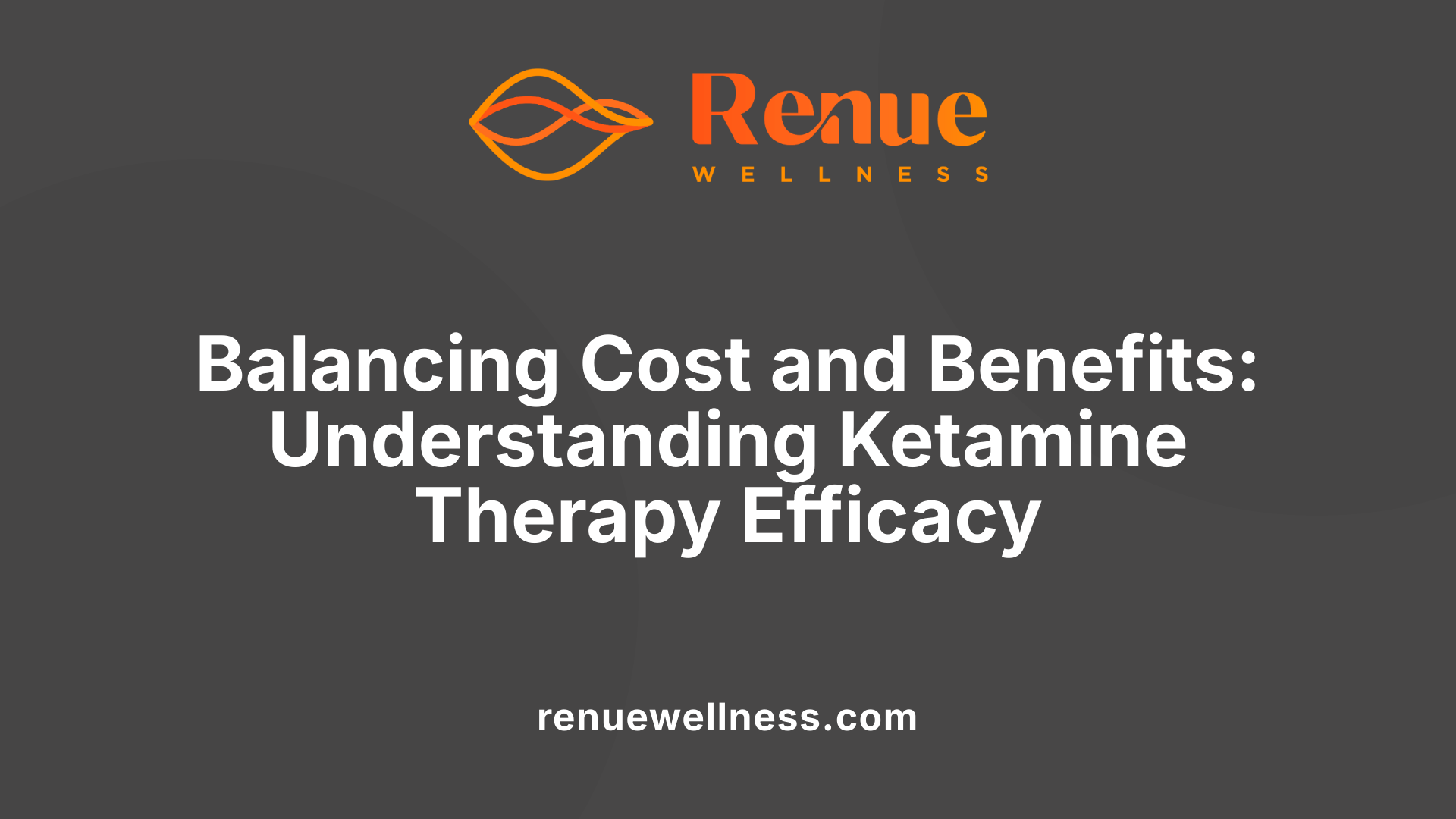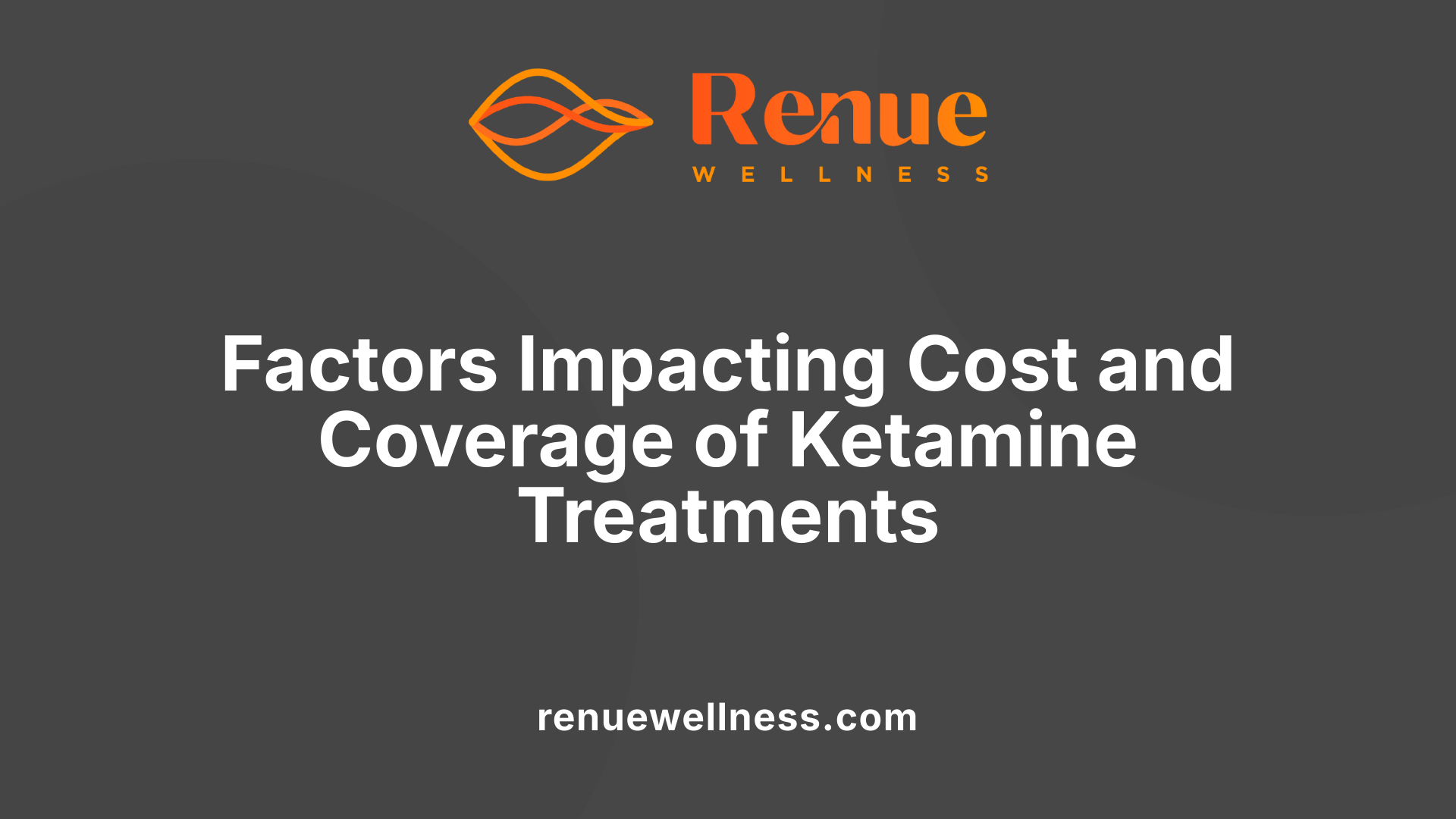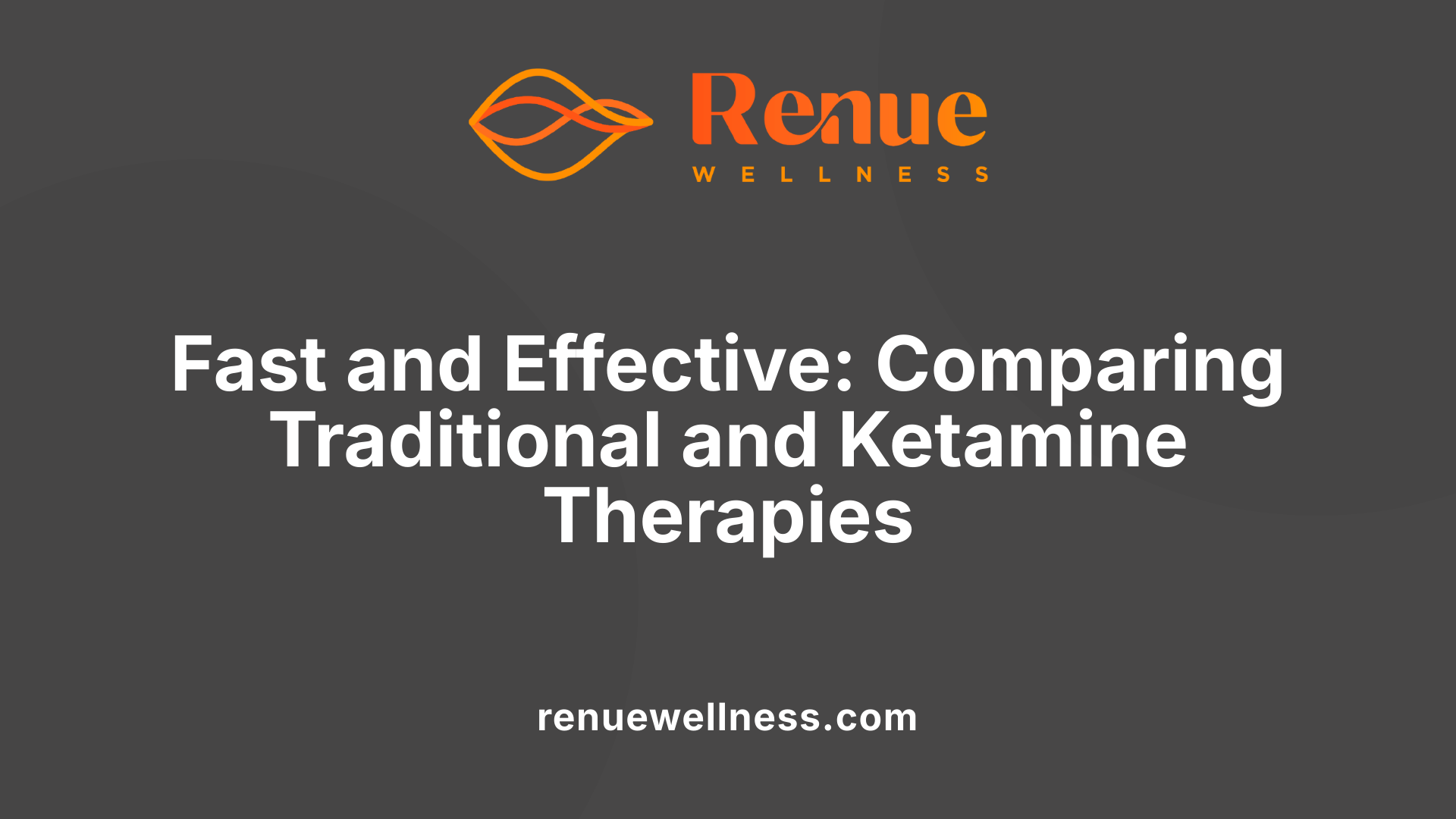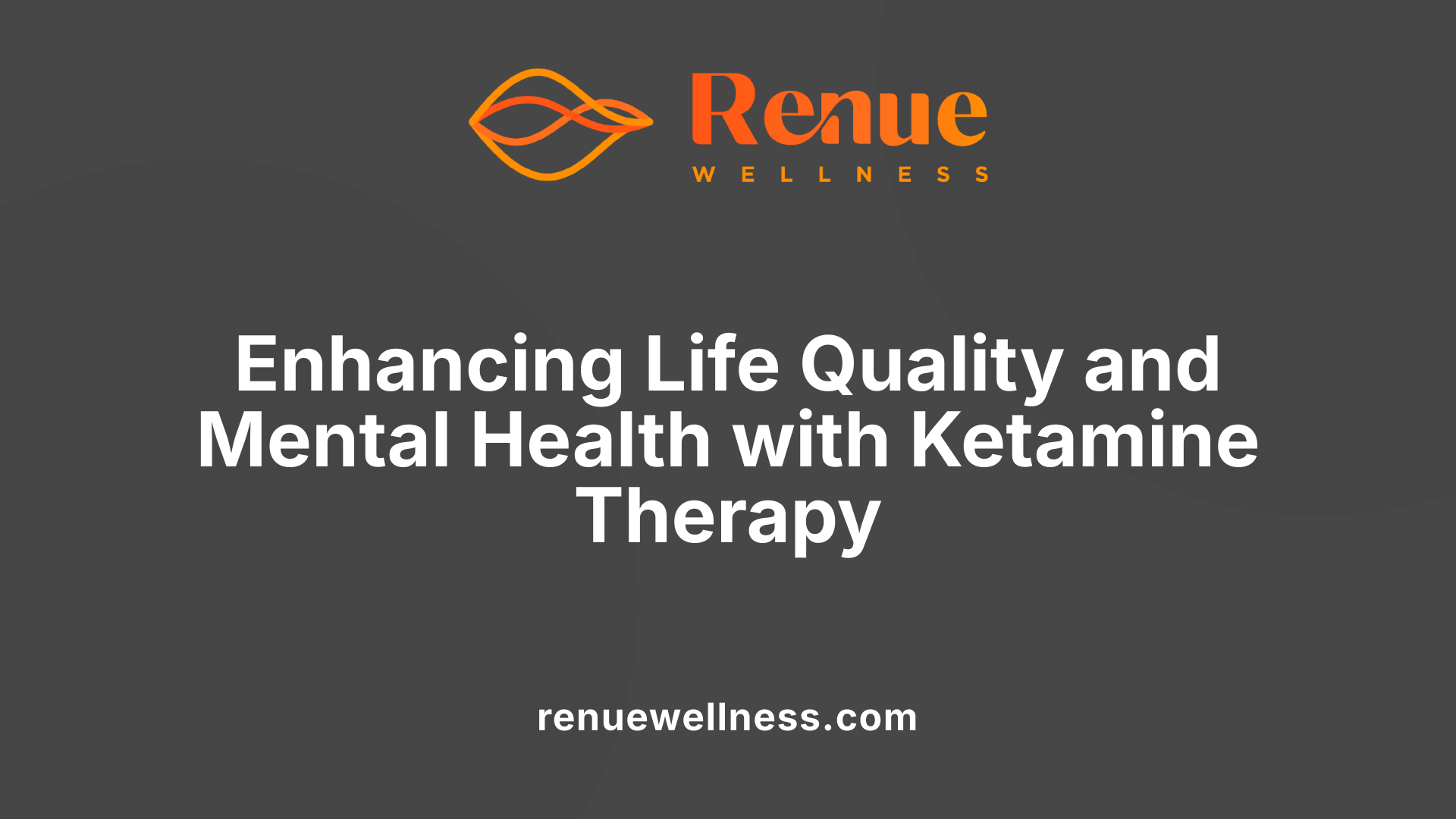Cost vs. Value: Why Ketamine May Be Worth the Investment


July 17, 2025
Understanding the Value Proposition of Ketamine for Mental Health and Chronic Pain
As mental health challenges and chronic pain conditions become increasingly prevalent, innovative treatments like ketamine have garnered attention for their rapid and effective results. Despite higher initial costs compared to traditional therapies, the unique benefits of ketamine—including quick symptom relief and potential long-term improvements—pose a compelling case for its value as an investment in wellbeing. This article delves into the costs, factors influencing pricing, comparative advantages, and the overall economic and personal benefits of ketamine therapy.
Costs and Effectiveness of Ketamine Therapy: Balancing Price and Benefits

What are the costs associated with ketamine therapy, and how are these evaluated in terms of benefits and effectiveness?
The expenses for ketamine treatment depend heavily on the method of administration and the treatment plan prescribed. For instance, oral ketamine typically costs between $75 and $300 for a set of sessions, while intramuscular injections range from $275 to $800 per session. Intravenous (IV) infusions are usually priced from $400 to $800 per session, whereas intranasal sprays like Spravato can cost around $600 to $900 per dose, with some insurance coverage available. Clinics charging for IV infusions often set prices between $600 and $1,000 per treatment, covering extensive medical oversight and monitoring.
Because insurance companies rarely cover off-label use of ketamine for mental health conditions, most patients are responsible for out-of-pocket payments. However, numerous financial options exist, including Health Savings Accounts (HSAs), financing plans, and veteran or first responder discounts.
The overall evaluation of these costs involves considering the rapid treatment response and the lasting improvements many patients experience. Rapid symptom reduction, improved quality of life, and fewer hospitalizations or relapses can translate into significant long-term savings in healthcare expenses. When assessing cost-effectiveness, stakeholders weigh how the immediate financial investment compares to the potential for reduced ongoing care needs and enhanced life quality.
In summary, while the upfront costs of ketamine therapy can seem high, especially for multiple sessions, the swift alleviation of depressive symptoms and the prospect of sustained mental health improvement often make it a cost-effective option for those resistant to traditional treatments. The evaluation framework balances monetary expenses against clinical benefits, focusing on long-term wellness and reduced healthcare utilization.
Factors Influencing Price, Coverage, and Financial Strategies

What factors influence the pricing, insurance coverage, and financial aspects of ketamine treatments?
Ketamine treatment costs and insurance coverage vary widely based on several key factors. The price per session can range from around $200 to $800, influenced by the treatment method—such as intravenous infusions, intranasal sprays, or oral tablets—as well as the clinic's location and the complexity of the treatment plan.
Typically, IV infusions are more expensive, costing between $400 and $1,200 per session, due to the need for in-clinic administration and medical oversight. In contrast, oral and sublingual options are generally less costly, with prices between $75 and $300 per dose. The total cost also depends on the number of sessions required, which for initial treatment often totals six to eight visits over several weeks.
Insurance coverage remains limited for most ketamine treatments for mental health conditions because many providers use off-label protocols that are not FDA-approved. Although Spravato (esketamine) nasal spray has FDA approval for treatment-resistant depression, its high cost—ranging from $600 to $900 per dose—often results in partial insurance coverage, with many patients still paying out-of-pocket.
Many clinics do not accept insurance due to the experimental and off-label status of ketamine for depression, leading to high personal expenses. However, some providers offer payment plans, and patients can explore options like Health Savings Accounts (HSAs), Flexible Spending Accounts (FSAs), and community grants or non-profit assistance programs to manage costs.
Market factors such as a high number of clinics operating with scant regulation also influence the affordability and accessibility of treatment. As the industry evolves with increasing clinical evidence, regulatory updates, and newer, potentially lower-cost formulations, treatment costs and coverage options may improve over time.
Comparing Traditional and Ketamine-Assisted Treatments: Speed, Efficacy, and Approach

How does ketamine-assisted therapy compare to traditional treatments for mental health and chronic pain, and what are its advantages and considerations?
Ketamine-assisted therapy (KAP) stands out for its ability to deliver rapid symptom relief, often within hours or days. This is especially significant for treatment-resistant conditions like depression, anxiety, PTSD, and chronic pain, where traditional treatments such as psychotherapy and medications may take weeks or months to show benefits.
Unlike conventional therapies that focus on gradual emotional and behavioral changes, KAP leverages ketamine’s unique neuroplasticity effects. It promotes brain healing processes, including neurogenesis and neural pathway repair, which can accelerate recovery. When combined with psychotherapy, ketamine helps clients gain new insights and process underlying issues more effectively.
Traditional talk therapy emphasizes sustained mental health improvement through personalized, ongoing sessions. It fosters long-term resilience but may be less effective for urgent needs or resistant conditions.
While KAP often involves fewer sessions with quicker results, it usually comes with higher upfront costs. Insurance coverage for off-label ketamine use remains limited, which can be a consideration. Additionally, side effects like altered sensory perception or blood pressure fluctuations require professional oversight.
Overall, integrating ketamine and traditional therapies can offer a comprehensive approach—rapid relief from distressing symptoms paired with efforts to sustain emotional growth and resilience. For patients facing severe or treatment-resistant issues, KAP provides an alternative that can significantly improve quality of life in a shorter timeframe.
Diverse Administration Routes and Their Impact on Cost and Value
 What are the different administration methods for ketamine and how do they impact cost and value?
What are the different administration methods for ketamine and how do they impact cost and value?
Ketamine can be administered through several methods, each with its own implications for cost, effectiveness, and accessibility. The most common approach is intravenous (IV) infusion, which involves delivering the medication directly into the bloodstream under medical supervision. IV infusions typically cost between $400 and $800 per session, and a standard course usually includes 6 to 8 infusions, totaling approximately $2,400 to $6,400.
Intramuscular (IM) injections are another option, often slightly more affordable than IV infusions, with prices generally ranging from $300 to $600 per session. IM injections require less setup time and are suitable for some patients depending on clinical judgment.
Intranasal sprays, such as Spravato (esketamine), are FDA-approved and involve self-administration in a clinical setting. Each nasal treatment costs about $800 to $900 per session, with additional monitoring fees due to safety protocols. This method offers convenience but may still pose accessibility challenges if insurance coverage is limited.
Sublingual tablets and oral formulations provide more economical options, often costing around $200 to $300 per dose. Some providers, including Noma, market sublingual ketamine at approximately $90, frequently with insurance reimbursement options. These forms are easier to administer outside clinical settings, increasing accessibility for some patients.
The choice among these methods significantly influences the overall treatment expense, perceived effectiveness, and patient suitability. IV infusions are highly effective for rapid symptom relief but involve higher costs and time commitments. Oral and sublingual options are more affordable and convenient but may have different bioavailability and onset times.
Considering the costs and benefits, patients and clinicians must evaluate the most suitable method based on individual health, financial factors, and treatment goals. As research advances and insurance options expand, the accessibility and value of different ketamine administration routes are likely to evolve, making personalized treatment planning essential.
Impact on Quality of Life and Mental Health Outcomes

How does ketamine therapy improve quality of life and mental health outcomes?
Ketamine therapy offers rapid relief from depressive symptoms, often within hours of the initial treatment. This swift response is particularly significant for individuals suffering from treatment-resistant depression (TRD), where traditional antidepressants have failed. The durability of these effects varies; some patients experience sustained improvement for weeks or months after completing a series of infusions, especially when combined with ongoing therapy or integration work.
Beyond symptom reduction, ketamine helps facilitate emotional and cognitive benefits that extend deeper into mental well-being. It promotes neuroplasticity—brain's ability to form new neural pathways—which supports emotional regulation, resilience, and personal insight. Many users report an enhanced capacity for self-awareness and processing past traumas, helping them understand underlying issues more clearly.
Patient stories and various research findings show that ketamine treatment can significantly improve feelings of vitality, hope, and overall life satisfaction. Patients often describe regaining interest in activities they previously enjoyed and feeling more emotionally balanced. For example, a person experiencing severe depression might report an improved outlook on life and stronger motivation to engage socially and professionally.
Research also indicates that the beneficial effects on quality of life can persist well beyond the active treatment phase. Repeated infusions and supportive therapy reinforce these positive changes, making ketamine an effective tool for long-term mental health improvement.
| Aspect | Result | Additional Notes |
|---|---|---|
| Symptom relief timeline | Hours to days | Rapid onset, especially beneficial in emergencies |
| Long-term durability | Weeks to months | Varies per individual, influenced by therapy support |
| Emotional benefits | Increased resilience and self-awareness | Promotes neuroplasticity and brain healing |
| Impact on lifestyle | Improved activity engagement | Regains vitality, enhances social and personal life |
Overall, ketamine therapy’s ability to deliver quick, meaningful improvements stands out as a major advancement in mental health care. Patients and clinicians alike observe that the therapy not only alleviates symptoms but also fosters a profound sense of emotional and psychological well-being, contributing to sustained quality of life enhancements.
The Long-Term Perspective: Is Ketamine Therapy a Worthwhile Investment?
Incorporating the evidence on cost, effectiveness, and quality of life improvements, ketamine therapy emerges as a compelling investment for individuals suffering from treatment-resistant mental health conditions and chronic pain. While the initial financial outlay can be substantial, the rapid relief, potential long-lasting benefits, and overall enhancement of wellbeing often justify the costs. As research advances and insurance coverage possibly expands, the affordability and accessibility of ketamine treatments are likely to improve, further bolstering its value proposition. Ultimately, for patients seeking swift, meaningful, and durable relief, ketamine represents a promising and, in many cases, justifiable investment in health and happiness.
References
- Why the Cost of Ketamine Treatment is Worth It | MaxWell Clinic
- The Cost-Benefit Analysis of Ketamine-Assisted Therapy vs ...
- Why the Cost of Ketamine Treatment is Worth It - Mindbloom
- Understanding the Costs of Ketamine Therapy: What to Expect
- The Cost of Ketamine Infusions
- Counting the Cost of Ketamine Therapy—Is It Worth Your Money?
- Ketamine economy: New mental health clinics pop up with few rules
Recent Posts
Conditions Treated
AnxietyDepressionOCDPTSDPostpartum DepressionPain ManagementSubstance AbuseSuicidal IdeationOur Location


